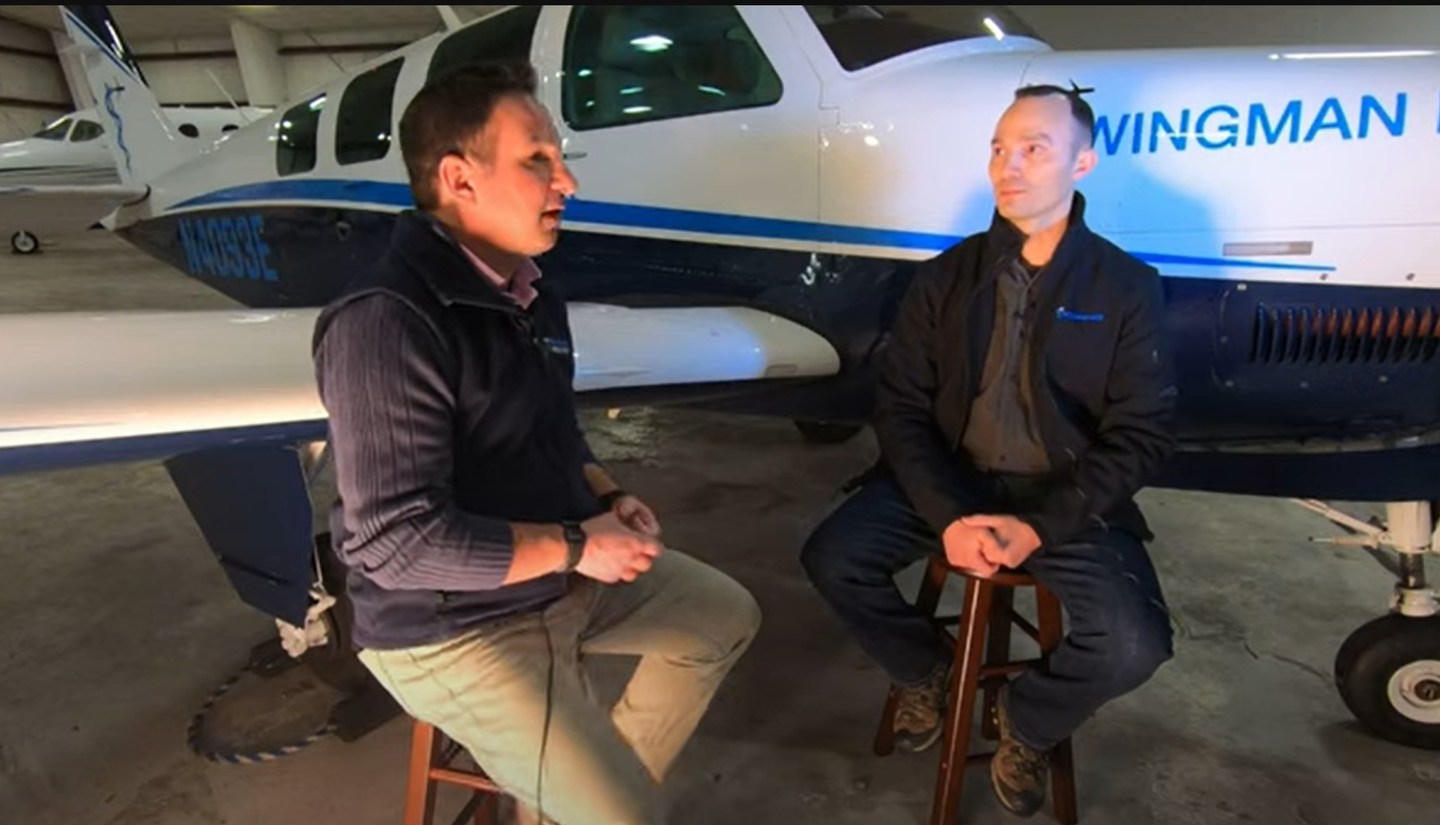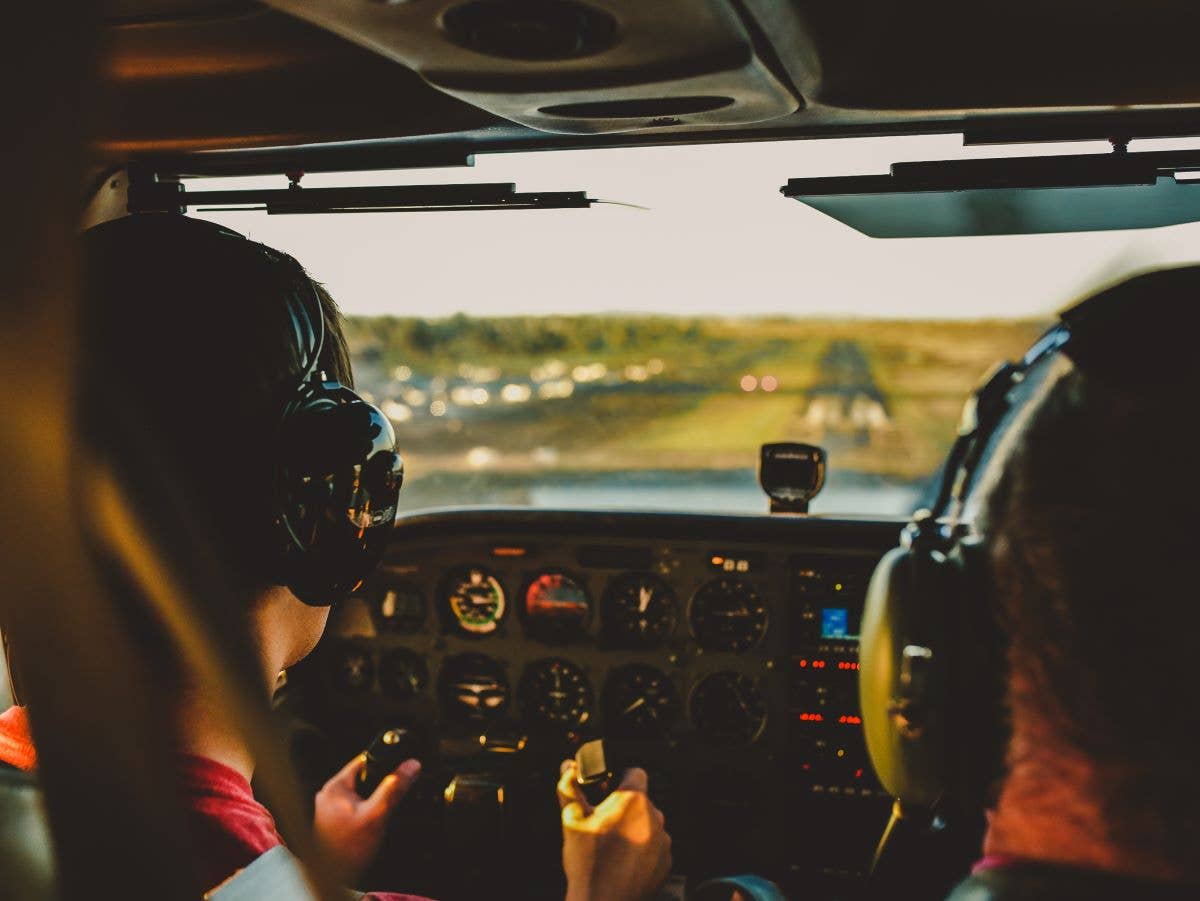What It’s Like For Deadheading Pilots
Passengers ask an awful lot of questions to a pilot riding in back
For as long as there have been airline flights or railroad passages or ships sailing the ocean blue, there have been deadheads. As crews move machines about the face of the planet, they frequently find themselves "out of place." To the airline pilot, deadheading is a fact of life. It's frequently met with a groan when it pops up on the schedule, but there are certainly times (bad weather, extended days) when a deadhead elicits a sigh of relief. For many years, our deadheads were paid at 50%, which added to the groan factor. With better labor agreements, we now get paid as if the deadhead were a regular flight, so usually it's a tolerable experience.
Flying like a passenger, and specifically with the passengers, can be a challenge. I'm not allowed, of course, to grumble about the leg room or the crying baby or the boorish "Million Mile" businessman two rows ahead. I'm still in uniform and representing my airline to the world. I try to be helpful to other passengers, encourage their compliance with the rules, and offer my keen attention to the flight attendant as he does his safety announcement. Sometimes I'm the only one.
Beyond appearances and proprieties, though, riding in the back is certainly different for a pilot than for a passenger. We can seldom just sit and read a book. By virtue of my uniform, I become a minor celebrity when I'm sitting in 6A. Passengers stare as they walk by, as if they can't quite cipher it out. "That's a pilot. He flies the plane," they say to their children, pointing at me all the while like I was an animal at the zoo.
If the passenger in question has had a rough trip, I'll frequently be the target of whispered---loudly whispered---commentary on the airline industry in general and this airline in particular. "XYZ airline stinks! I will never fly on them again!" All this is directed at me, as if I might take notes on his critique and deliver them to the CEO when I pass her in the hall. Of course, many of my deadheads end up being booked on other carriers, so this whole strategy of grievance is flawed from the start.
At least three times on every deadhead leg, I'm approached by a passenger who says some version of the following: "Well, if you're back here, who's flying the plane, ha ha!" We both have a quick chuckle, and usually someone nearby calls me the "spare" and asks if my name is Otto. As my brother says, "That old joke never gets funny."
Every airline passenger is familiar with the ordeal of being forced to make conversation with the total stranger and fellow sardine in the adjacent seat. The usual suspects include the cat enthusiast with a million cute anecdotes (and pictures), the evangelical who is, well, too evangelical, and the political philosopher who just read an "important article" on (insert website here.)
Despite such encounters, meeting a stranger on a plane can be a pleasant experience. For every weepy twentysomething with a relationship on the rocks, there's a quiet, thoughtful person with an interesting story to tell. I met a historian the other day who had written a book on the Peloponnesian War, a subject I never knew I was interested in. By virtue of his knowledge and passion, I spent two happy hours on the way to Albany chatting with him and several hours later reading up on Athens and Sparta. Another time I sat next to an older gentleman who, with some coaxing, revealed that he had flown B17 missions over Germany during World War II. I reckon that I'd still be begging him for details had we not landed in Chicago. He was probably glad to be rid of me.
Frequently, the tables are turned. Anthony Bourdain once said, "A little knowledge can be dangerous!and annoying." This is especially true while deadheading. Perhaps the most challenging person to share a row with is the student pilot with a couple of lessons under his belt or the non-pilot aviation buff. I'm always grateful for their enthusiasm. They are, after all, the engine that keeps our hobby and profession going. Still, after a 4 a.m. show in Bismarck, I just want to close my eyes for a few minutes and get ready for my Peoria turn. The questions and observations are generally spaced out just enough to allow me to drift off but not quite achieve drooling R.E.M.
My seatmate will suddenly tap me firmly on the shoulder: "Good morning, Captain!" Pause. "Do you fly this bird?"
Me, rubbing my eyes and wiping off the drool: "Uh, yeah, uh, I fly this one, alright. I'm sorry it's so small, I know the gate agent was rude, I wish the overhead bins could accommodate your Jet Ski, but!"
My new friend: "No, no, sir, I love the regional jets. I just thought I should tell you that the left wing is leaking fuel really badly."
Me, now wide awake: "Uh, what?"
Him: "Yeah, it's either that or the flap actuator has ruptured. It's losing hydraulic fluid at a rapid rate. It could be a brake line, though. The Flight Attendant said it was de-icing fluid but, you know, as a fellow pilot, I felt I should report it directly to you."
Me, very concerned at this point, and running through my systems mentally as I try to peer out through the de-icing-fluid-obscured window. The terms leaking, ruptured and rapid rate are sure to focus the mind: "Uh, well, the flaps are electric, so, it's probably not that. Where is, uh, where is the leak exactly?"
He points at the trailing edge of the wing, where great green globs of Type 4 de-icing fluid are dribbling from the flap guides.
Me, breathing a sigh of relief and settling back into my seat: "I'm glad you brought that to my attention, sir, but I think it's gonna be okay. I really think that might be de-icing fluid."
Him, unsatisfied: "I don't know. It looks like jet fuel to me. I think I better talk to the real captain." He pushes his flight attendant call button.
One might imagine that being seated next to a fellow pilot would be a relief. Pilots love to talk about flying, after all---just ask an airline pilot's spouse. Inevitably, though, these are the guys who end up embarrassing me.
"Good morning, Captain, sorry to wake you, but I had a couple of questions, and you were, you know, snoring pretty loudly."
Me: "Well, sure, sorry about that. Fire away."
Are you an aviation enthusiast or pilot? Sign up for our newsletter, full of tips, reviews and more!
The enthusiast, in rapid fire succession: "What do you think of the aspect ratio on the wing on the new Cirrus Jet? Could you explain Bernoulli's Principle to me? Do you know exactly what Mach speed Chuck Yeager reached in Glamorous Glennis? If a Canadair Regional jet leaves Montreal for Chicago at 12:15 Eastern Time and a Boeing 737-800 leaves Chicago for Montreal at 13:20 Central Time!"
Me, totally befuddled: "Huuuuh?"
At least fellow pilots don't tend to ridicule the flight deck crew's technique. On a deadhead from Denver to Tulsa, our pilot executed an absolutely textbook crosswind landing with a 25-knot component. It was smooth, it was on centerline, and it was in the touchdown zone. As we taxied onto the high speed, the businessman across the aisle leaned over to me and said, confidentially, "Well that landing was terrible. He landed on one wheel before all of the others." I nodded and smiled. The customer is always right.
In the end, my favorite passengers, by far, are the kids. They're not jaded like their parents. Their expectations aren't inflated. They don't remember the "golden age" of aviation when meals were served on fine china with metal cutlery. They are, bless them, just happy to be on an airplane, get a bag of pretzels and press their little noses against the window.
Their questions are reasonable, and my drowsy answers aren't likely to be contradicted.
"Hey, Mr. Pilot. How fast are we going?"
There's no need to strain my feeble brain cells with some convoluted discussion of Mach speed, indicated versus calibrated, headwinds and tailwinds.
The answer is: "Five hundred miles per hour!" It always impresses and always satisfies.
"How high up are we, sir?"
"Seven miles high, son." No elaboration needed.
His admiration is immediate, sincere and enthusiastic.
"This plane is AMAZING!!And you get to fly it?"
I choke up just a little. My chest swells with the kind of pride regional jet pilots are unaccustomed to. I give him a smile and a pat on the head. For just a moment, I remember again why I always wanted to fly passengers instead of cargo. With quiet joy, I think to myself, "Wow! Five hundred mph---that is pretty amazing!"

Subscribe to Our Newsletter
Get the latest Plane & Pilot Magazine stories delivered directly to your inbox






